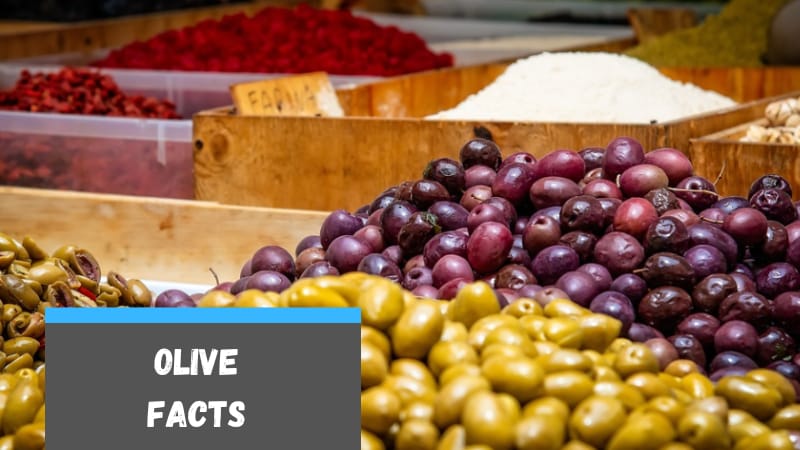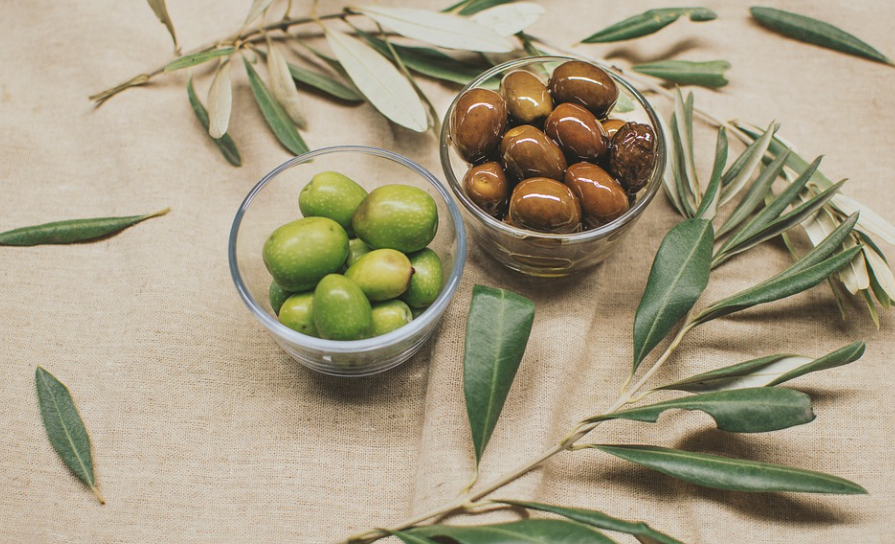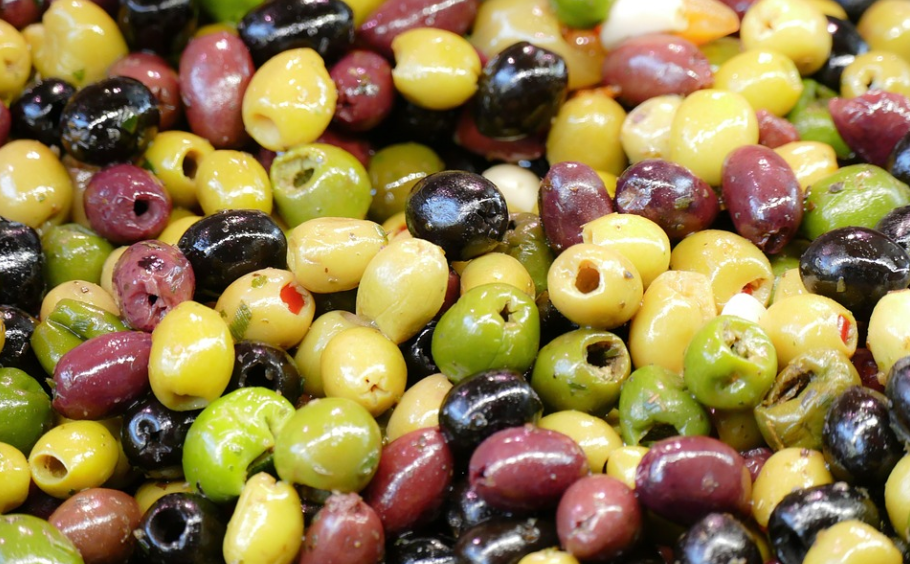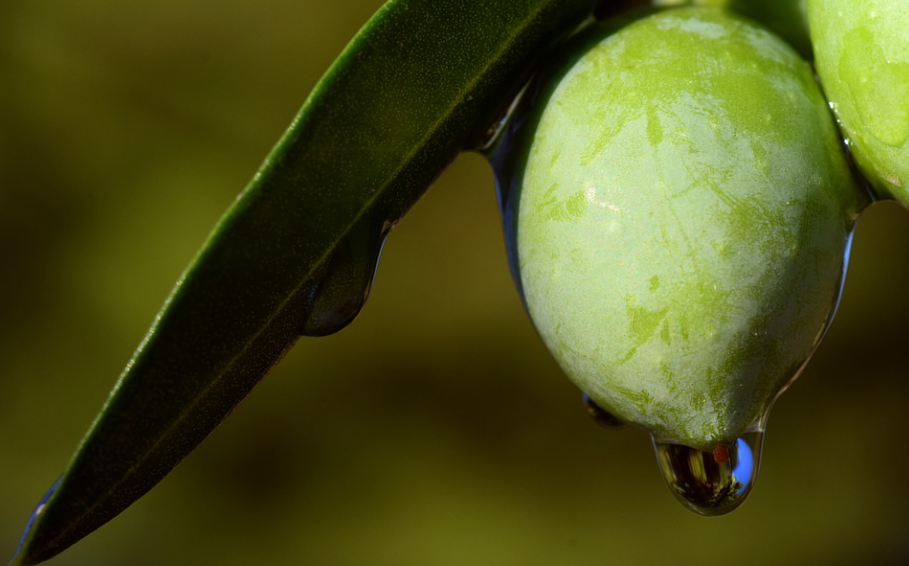
Are olives healthy? What sizes do olives come in? Which flags feature an olive branch? Get the answers to these and many more in these facts about olives.
Olives are adaptable foods that may be in your cuisine as delicious accompaniments to a wide variety of other foods. This article is going to highlight 35 intriguing and informative facts about olives.
It is common knowledge that olives are with a variety of beneficial nutrients.
These tiny fruits are gaining a reputation as good heart aids, and they you may consume them either cured, whole, or pressed into oil for cooking.
However, the advantages of these little fruits extend beyond merely a boost to the cardiovascular system.
Knowing these significant advantages will motivate you to adopt a lifestyle more typical of the Mediterranean.
The olive itself, also known as the table olive, and the valuable oil extracted from the olive fruit by pressing the fruit’s flesh are both useful products of the olive tree.
In point of fact, a third award goes to the tree that features a crooked trunk full of character, leaves a grayish-green color, and wood that gets utilized for carving and building furniture.
The fallen fruit can appear to trouble, but it can’t. Processing is necessary for the consumption of any olive, regardless of whether it is green or black.
So, let’s go ahead with this article for interesting facts about olives.
Facts about Olives
1. In Ancient Rome, olive oil had dual purposes as a moisturizing skin care product and a sun protection factor (SPF) equivalent.
2. Ancient Greek women made eye shadows and eyeliner by mixing olive oil and charcoal.
3. For thousands of years, the olive tree has been a source of creativity for painters, poets, and musicians. Several works of art, like Olive Grove by Vincent Van Gogh and The Olive Tree by Karl Shapiro, demonstrate the allure of olive trees to creative minds.
4. Olives can range in size from miniature to enormous.
5. Since oleic acid keeps skin supple and healthy, eating olives reduces wrinkles by 20%. Olives are a good source of vitamin E, an antioxidant particularly beneficial to the skin.
6. Every year, people throughout the globe go through over 2.25 million liters of olive oil.
7. Compared to refined vegetable oils, extra virgin olive oils offer many more health benefits and a much more subtle flavor.
8. Of course, eating olives straight off the tree is not a good idea. To make the olives edible after harvesting, brine processing is required.
9. We use about 10% of olives for consumption as table olives, while the remaining 90% for olive oil.
10. If you want to make one liter of olive oil, you’ll need about seven liters of olives.

11. The olive branch can represent either triumph or peace. The flags of Cyprus, Eritrea, and the United Nations feature the olive branch.
12. One can consume olives directly from the tree. Olives are bitter before fermentation, but afterward, they become delicious.
13. While olive trees aren’t indigenous to what we now call California, they are likely to get imported to the area in the middle of the 18th century.
14. People gather olives between the middle of fall and the beginning of winter. However, this time frame may be on factors such as the type of olive tree, the local environment, the olives’ intended purpose, etc.
15. Despite not liking subfreezing weather, numerous trees have frozen but survived because their roots did not. Olive trees can remarkably regrow after things like fire and disease damage them.
16.Olive trees have extraordinary longevity, often living for over a thousand years.
17. At least 20,000 people annually visit the 2,000-plus-year-old olive tree on the Greek island of Crete. Olive trees outnumber Greek citizens 1 to 1.
18. When oil gets referenced in the Bible, it almost always refers to olive oil or something that contains olive oil. Even oils used for anointing, lighting, and other purposes started as olive oil.
19. Flowers on olive trees are tiny and white, and they bloom very late in the spring.
20. Once mature, olive trees of the Chemlali species may provide an annual crop of roughly 2,000 pounds of olives.

21. Olive trees vary in height from 25 to 30 feet at maturity, depending on the species and environmental circumstances in which they are grown. Some exceptional trees produce much taller than this.
22. Unlike many other fruit trees, olive trees don’t need outside help to produce fruit. So, even if you have one olive tree, you can still harvest olives.
23. Even though olive trees have specific needs to thrive, they can survive dry spells.
24. Olive tree blooms provide a plentiful supply of nectar for bees, and wind generally pollinates olives.
25. Olive wood has a name for its tricolored longevity and striking appearance, branches’ deep brown color, and intricate grain patterns.
26. There are now eight Olive branches in the USA.
27. An olive branch represents peace in many different civilizations, and this tradition continues today.
28. Countries like Italy, Spain, Greece, and Morocco are among the top consumers of olives worldwide.
29. Some top consumers of olive oil include Spain, Italy, the USA, Greece, and Syria.
30. In contrast to green tea, olive-leaf tea is relaxing and has higher antioxidants and vitamin C levels.

31. Given olives’ high nutrient density and low-fat nature, olive oil is a healthy alternative to other types of cooking fat.
32. Although the age at which an olive tree produces its first crop varies with species, most kinds do not produce fruit until at least three years old.
33. Antioxidants, abundant in olive oil, can give a reduction in cancer risk.
34. Olive oil does not include any carbohydrates, fats, or cholesterol.
35. All olives begin life green and mature into various colors; the most extended maturation period is required for a black olive to form.
Conclusion
Fruit appears on olive trees as early as year eight, but it takes another 15 to 20 years of growth before the trees provide any significant number of olives.
Olive trees continue to bear fruit until they are roughly 80 years old. When properly planted, these trees can last for hundreds of years.
Olive trees thrive in the subtropics’ humid warmth, usually in the northern & southern hemispheres.
There are hundreds of cultivars, some of which we plant specifically to make olive oil, while others produce olives suitable just for consumption.
Regarding olive production, Italy and Spain are the world leaders. Treat your taste buds right this minute by including olives in your dishes.
Stay connected for more informative articles.
